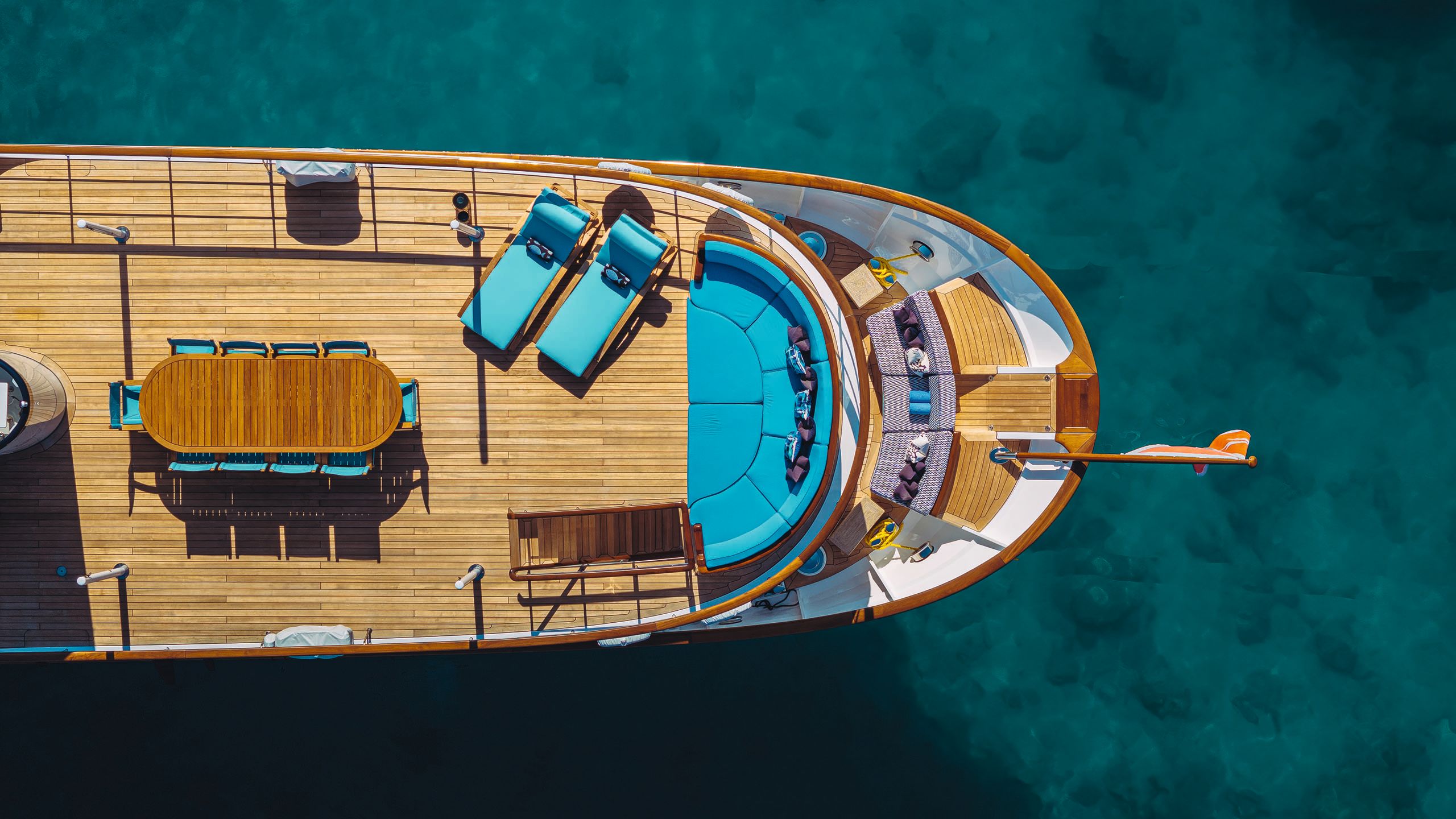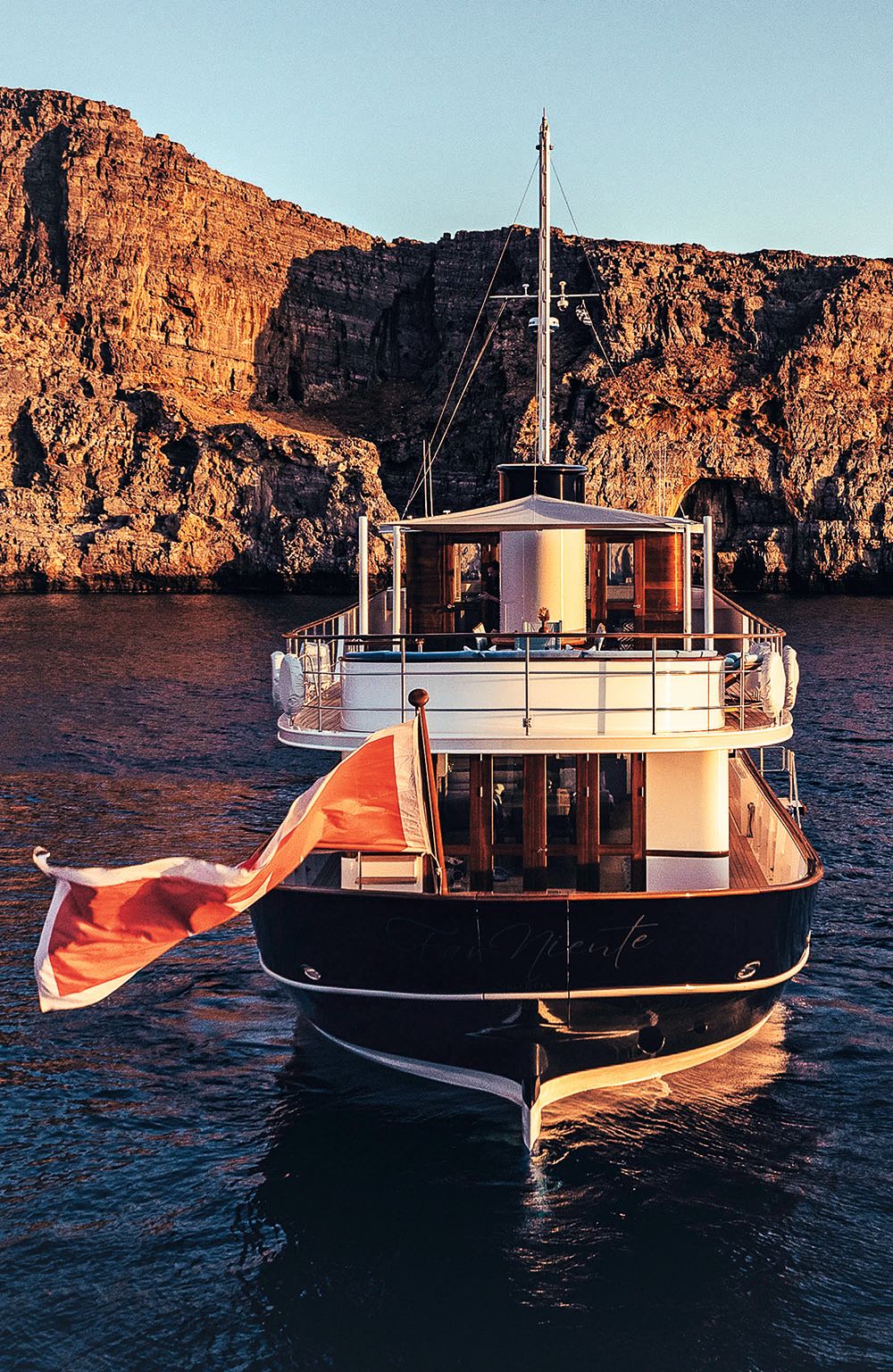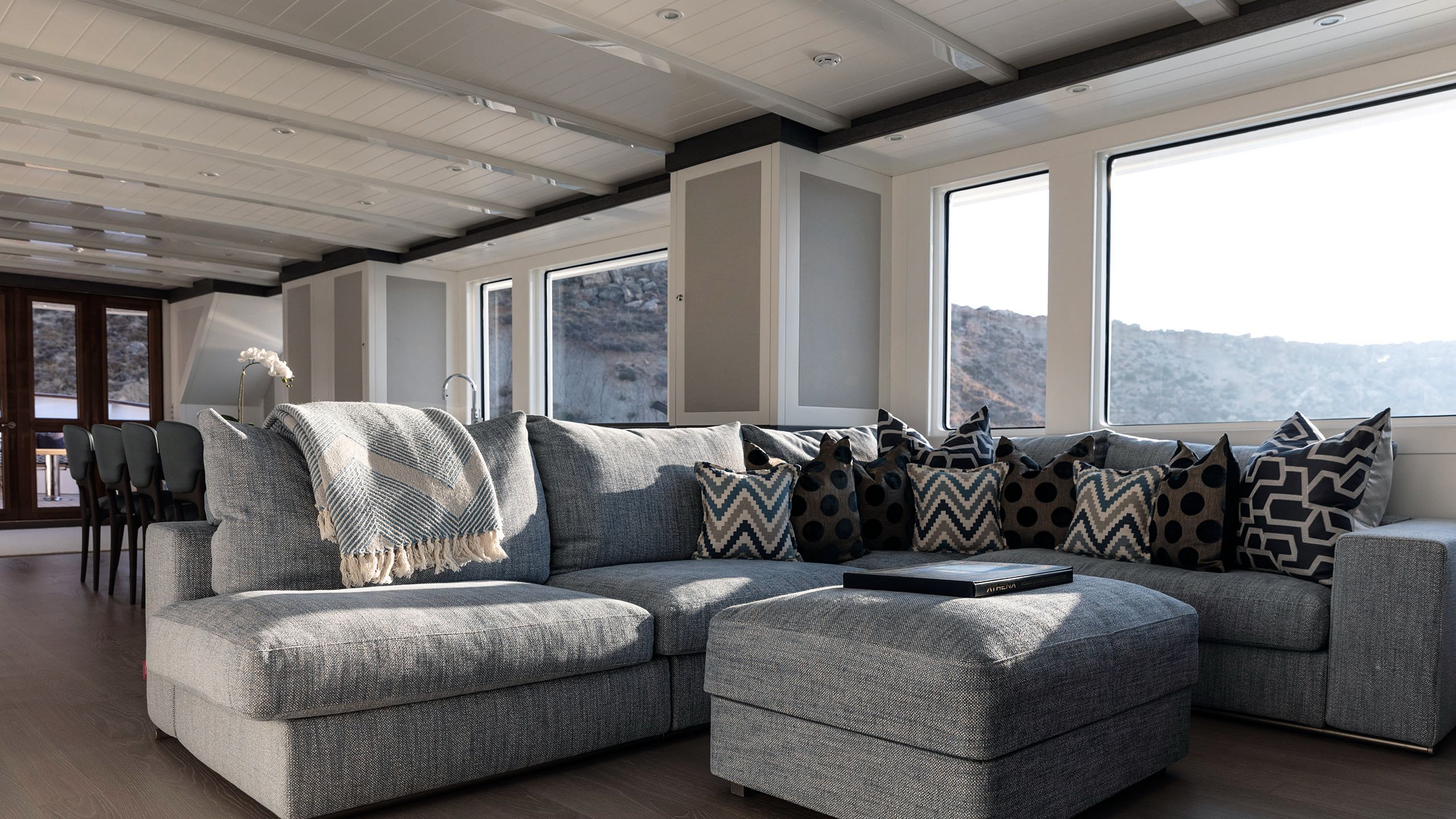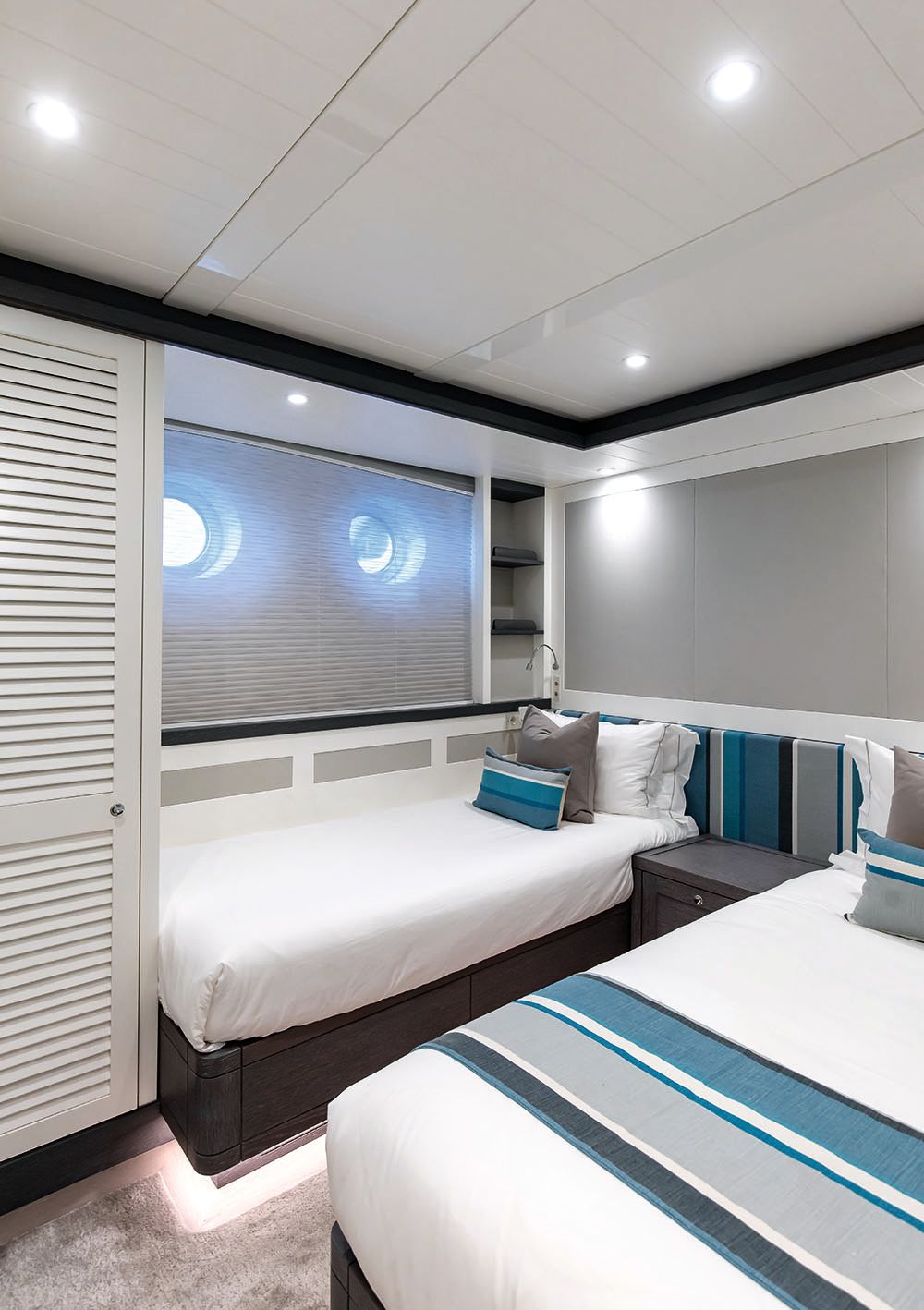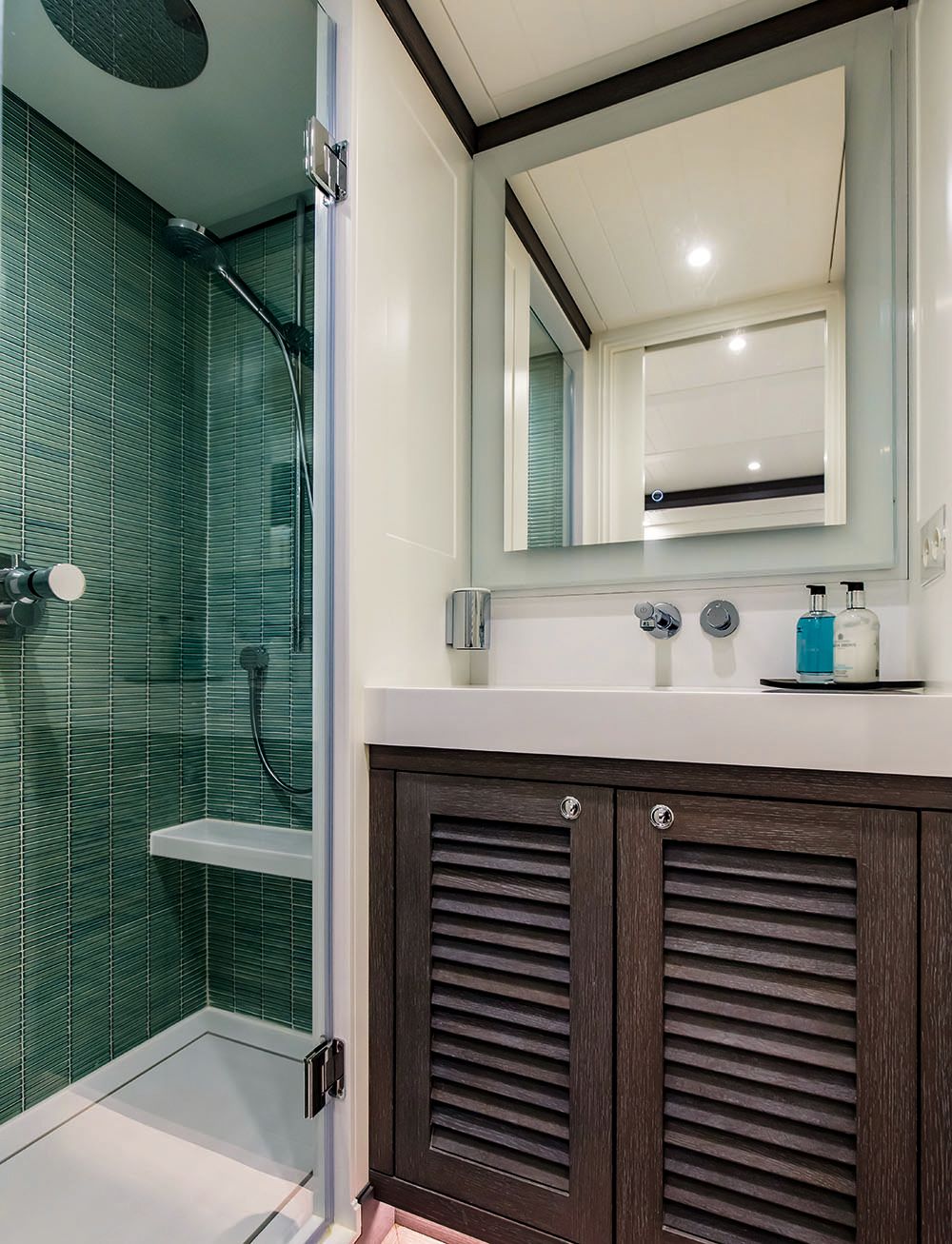CLASSICAL JAZZ
On board SES Yachts' 33m Far Niente, designed by Hoek Design
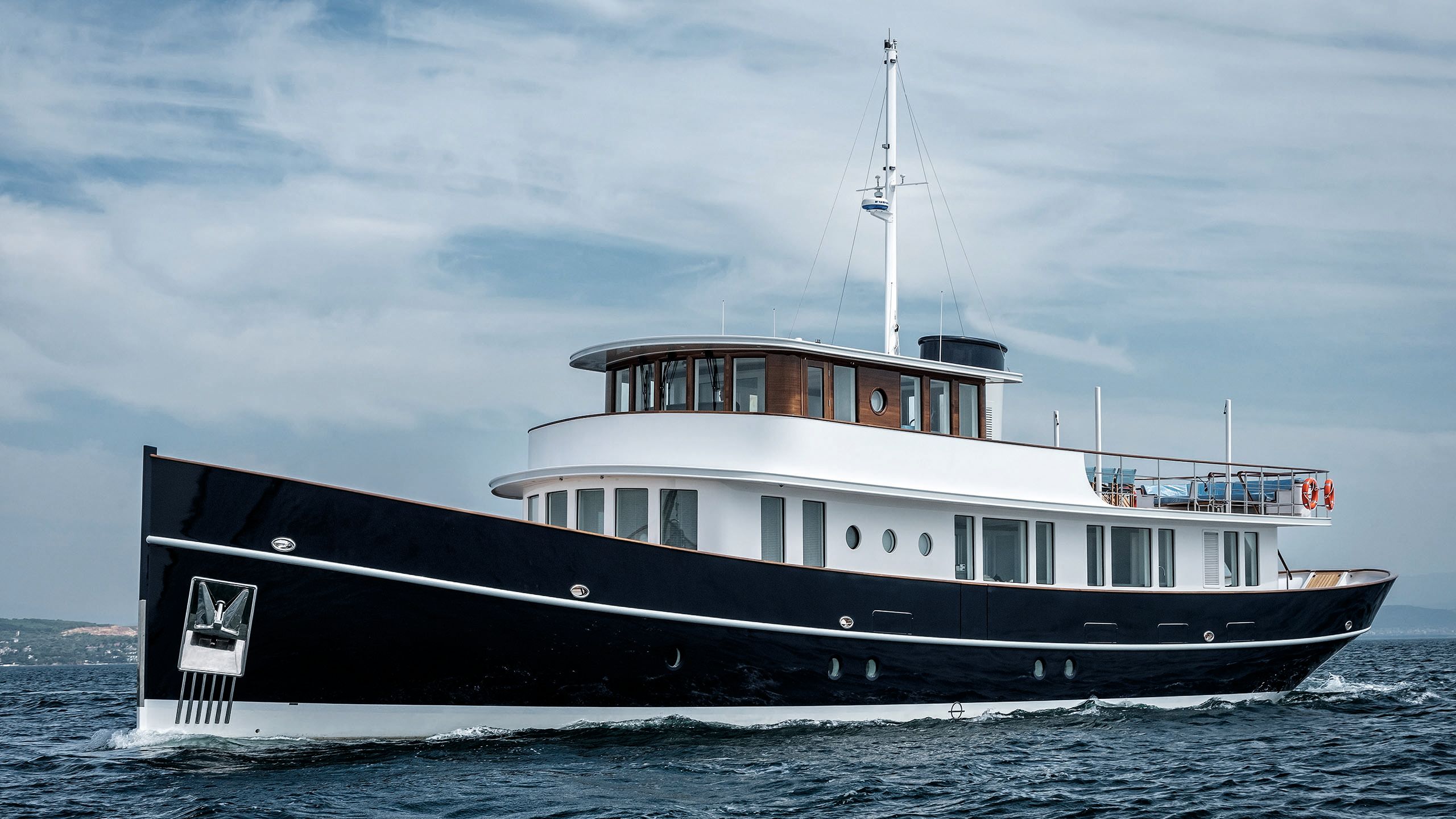
The retro-inspired exterior of Far Niente belies her modern attributes and contemporary interior. Risa Merl steps on board this modern classic marvel
KEREM SANLIMAN
Is there anything more beautiful than the graceful curve of an elliptical stern? This thought bubbles to the surface as I first set eyes on the elegant aft section of 33-metre Far Niente, designed by Hoek Design and built by SES Yachts. With the yacht moored stern-to in Monaco, it’s easy to admire the ample overhang of her shapely aft end, which curves and tapers downwards while raking forward to reveal the top of the rudder at the waterline below.
STEVE TURVEY
Is there anything more beautiful than the graceful curve of an elliptical stern? This thought bubbles to the surface as I first set eyes on the elegant aft section of 33-metre Far Niente, designed by Hoek Design and built by SES Yachts. With the yacht moored stern-to in Monaco, it’s easy to admire the ample overhang of her shapely aft end, which curves and tapers downwards while raking forward to reveal the top of the rudder at the waterline below.
STEVE TURVEYFar Niente offers ample outdoor areas for enjoying life on board, a boon for guests. She’s offered for charter by Classic Charters
STEVE TURVEYFar Niente offers ample outdoor areas for enjoying life on board, a boon for guests. She’s offered for charter by Classic Charters
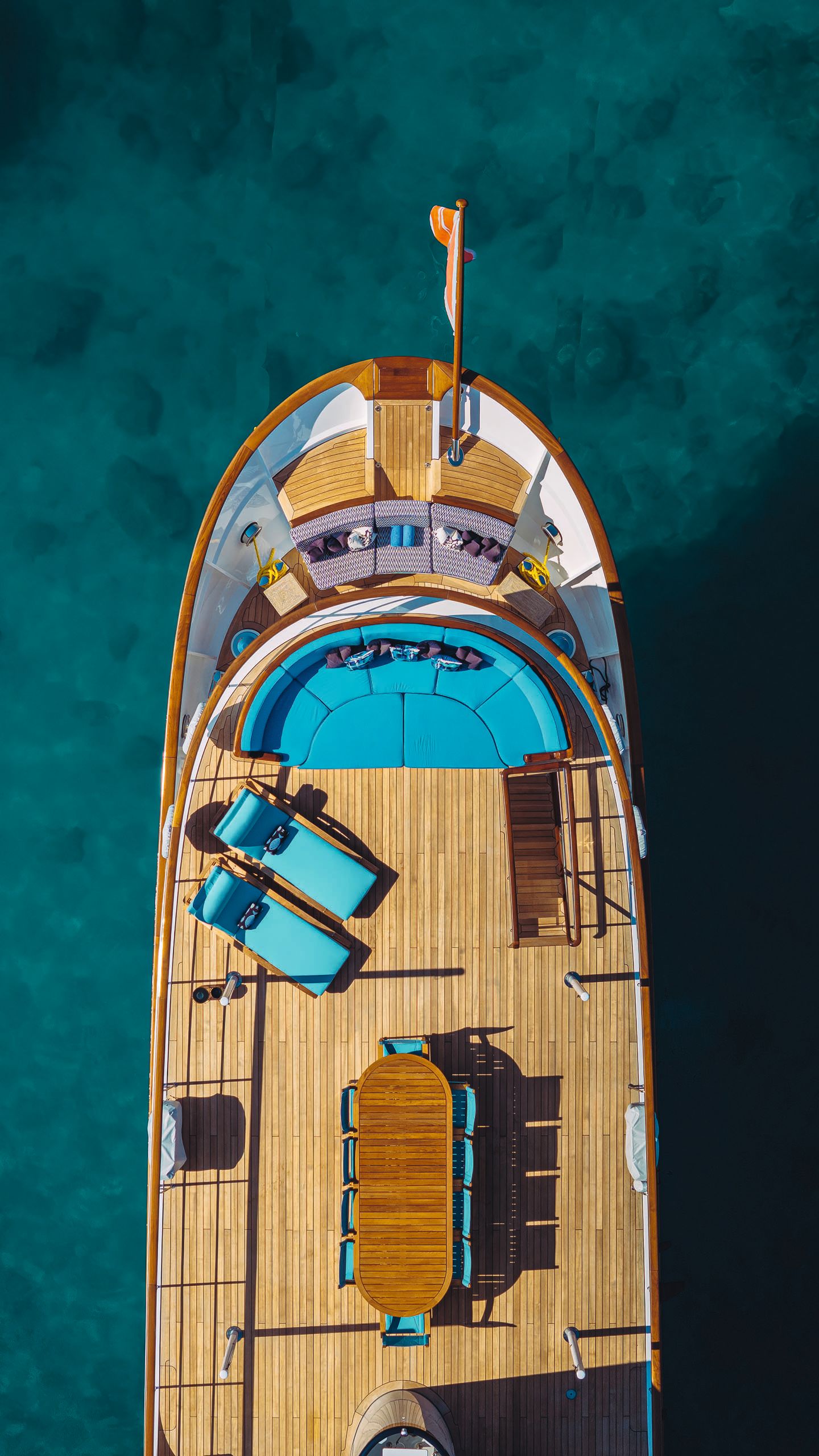
Elliptical sterns were popular from the Age of Sail long into the early 1900s, so you’d be forgiven for assuming that Far Niente is a classic yacht. But this clever stern does something that many classics do not.
“A vertical part of the stern below the bulwark opens up hydraulically, lowering the bulwark as well,” explains designer Andre Hoek, founder of Hoek Design Naval Architects. The opening section unfurls to be almost horizontal with the water’s edge below, and a telescopic passerelle emerges from the structure, making boarding from the dock a breeze.
STEVE TURVEYFar Niente’s elliptical stern opens at centre to reveal a telescopic passerelle for boarding
STEVE TURVEYFar Niente’s elliptical stern opens at centre to reveal a telescopic passerelle for boarding
A removable swim ladder also can be attached to ease water entry when it’s time for a swim. It’s thoughtful design features like this, along with her generous five-cabin layout, optimised hull design and excellent sound damping, that make Far Niente a winning modern classic yacht that benefits in equal parts from new technologies and storied good looks.
“There’s just a sense of being on a wooden epoxy boat that feels more genuine. This type of construction is labour intensive. You can’t find it in many places”
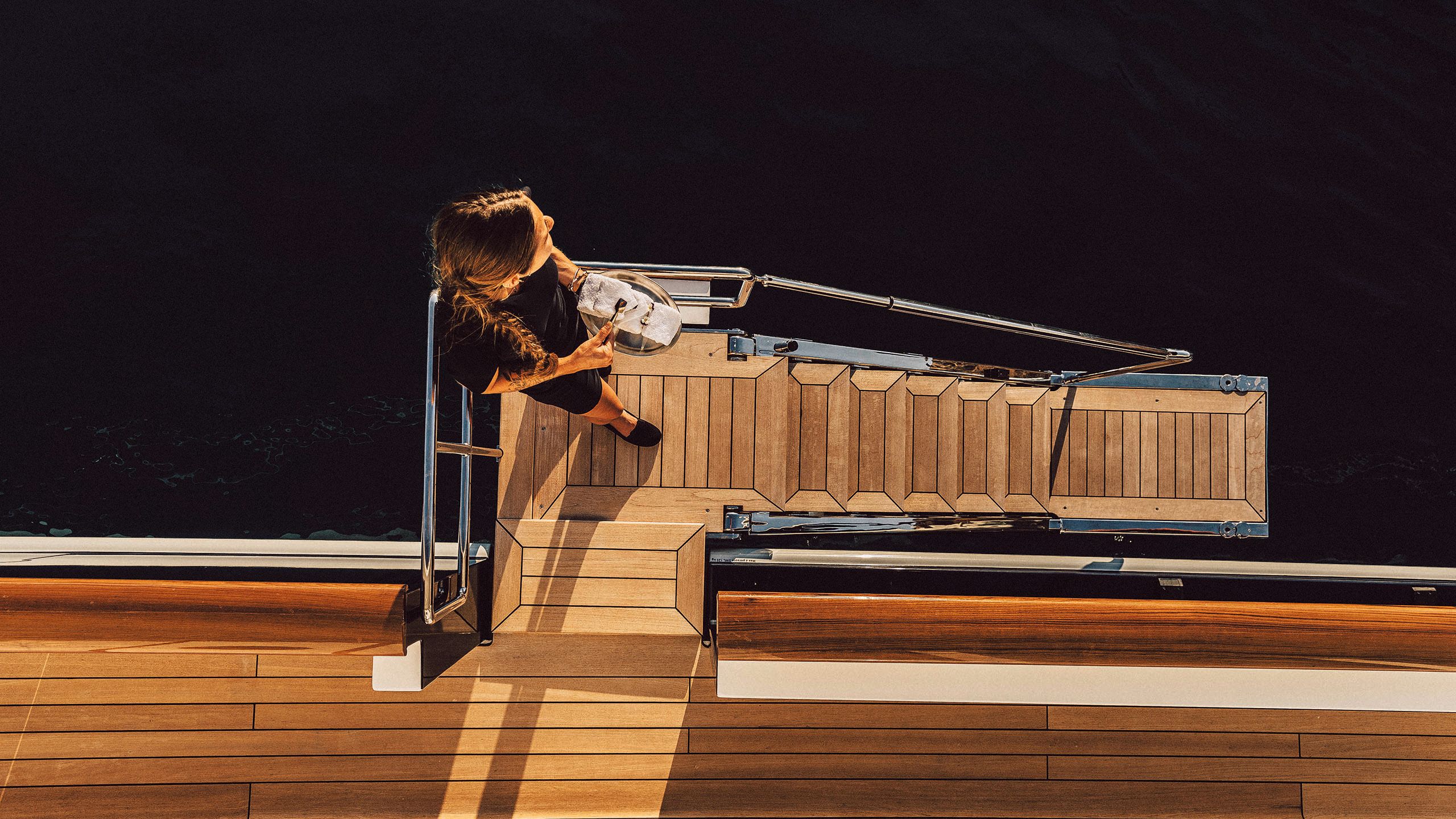
“There’s just a sense of being on a wooden epoxy boat that feels more genuine. This type of construction is labour intensive. You can’t find it in many places”

Far Niente’s owners, however, originally had a classic refit in mind. “The owners had a 110-year-old hull that they bought to revive,” says Elif Yıldırım, managing partner of the Turkish shipyard SES Yachts and daughter of SES founder Sefer Yıldırım. Built for fishing in the North Sea, the 1911 boat was a type of vessel known as a herring lugger.
The owners knew from the outset that they wanted the yacht to be chartered, and it quickly became evident that getting the old hull up to commercial code would prove difficult and quite costly. “It would’ve been more of an investment than it was worth, so we started from zero,” Yıldırım says.
It was decided to move on with a modern classic design instead. While Far Niente is not a replica, she was certainly inspired by the lines of Dutch herring luggers of the early 1900s.
STEVE TURVEY
STEVE TURVEY
“We made the stern one metre longer, so it’s nicer looking, but still in keeping with the original designs of this type of vessel,” says Hoek. Viewed in profile, this elongated stern adds a sinuousness to the yacht’s profile, and the extension helped provide more spacious living areas on board.
It was decided to move on with a modern classic design instead. While Far Niente is not a replica, she was certainly inspired by the lines of Dutch herring luggers of the early 1900s. “We made the stern one metre longer, so it’s nicerVlooking, but still in keeping with the original designs of this type of vessel,” says Hoek. Viewed in profile, this elongated stern adds a sinuousness to the yacht’s profile, and the extension helped provide more spacious living areas on board.
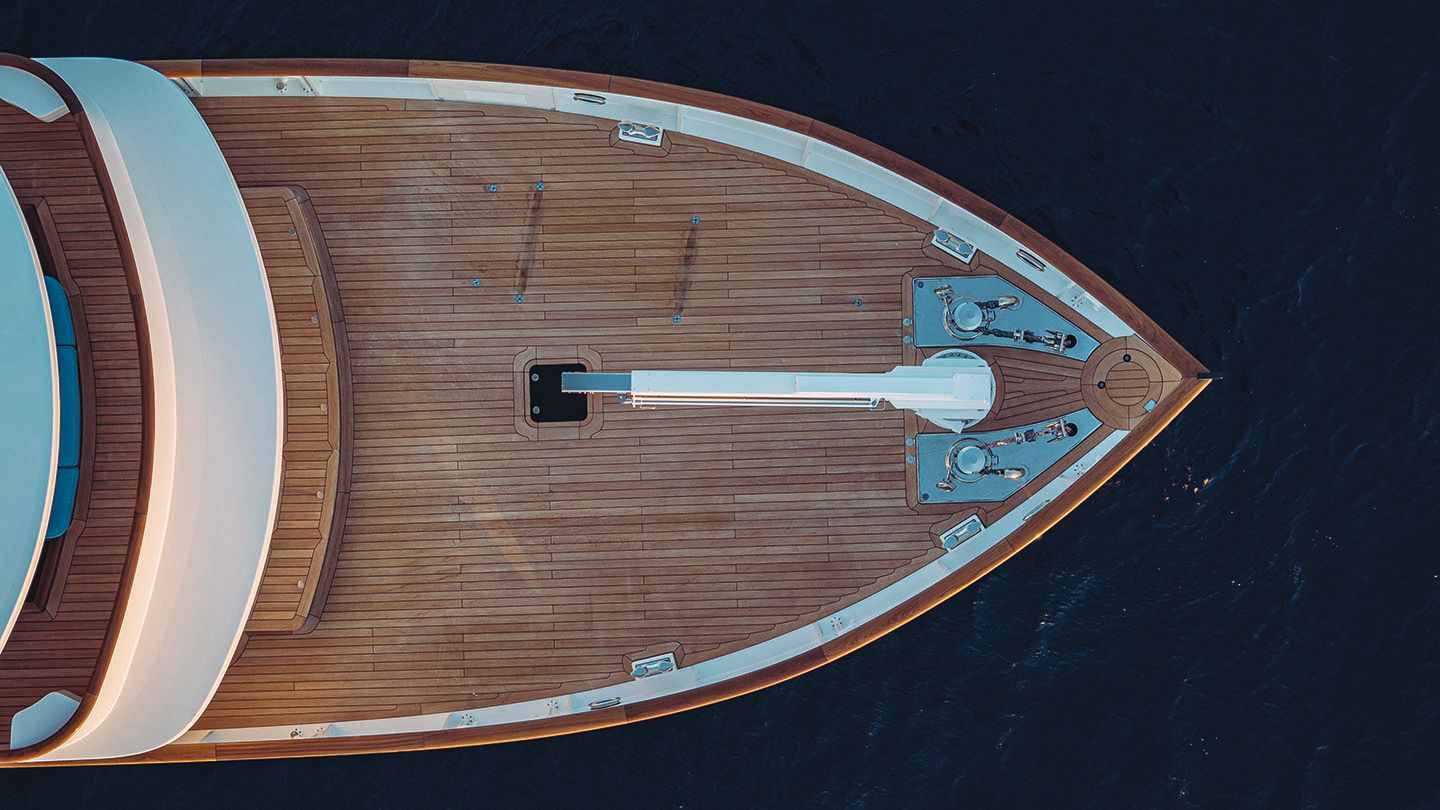
Hoek Design is experienced in creating modern classics. Its portfolio includes 56-metre motor yacht Blue II and many classically inspired sailing yachts.
“Once again, we have combined the timeless and elegant good looks of a classic motor yacht design with a fully optimised, high-tech underwater body shape, using all the modern design programming we now have at our disposal,” says Hoek. His studio was responsible for the exterior and interior design, and the naval architecture of Far Niente, though the owners were heavily involved in the interior styling.
STEVE TURVEYCharter guests can enjoy dining next to the yacht’s funnel, which conjures up the feeling of classic yachts such as Bluebird or Talitha
STEVE TURVEYCharter guests can enjoy dining next to the yacht’s funnel, which conjures up the feeling of classic yachts such as Bluebird or Talitha
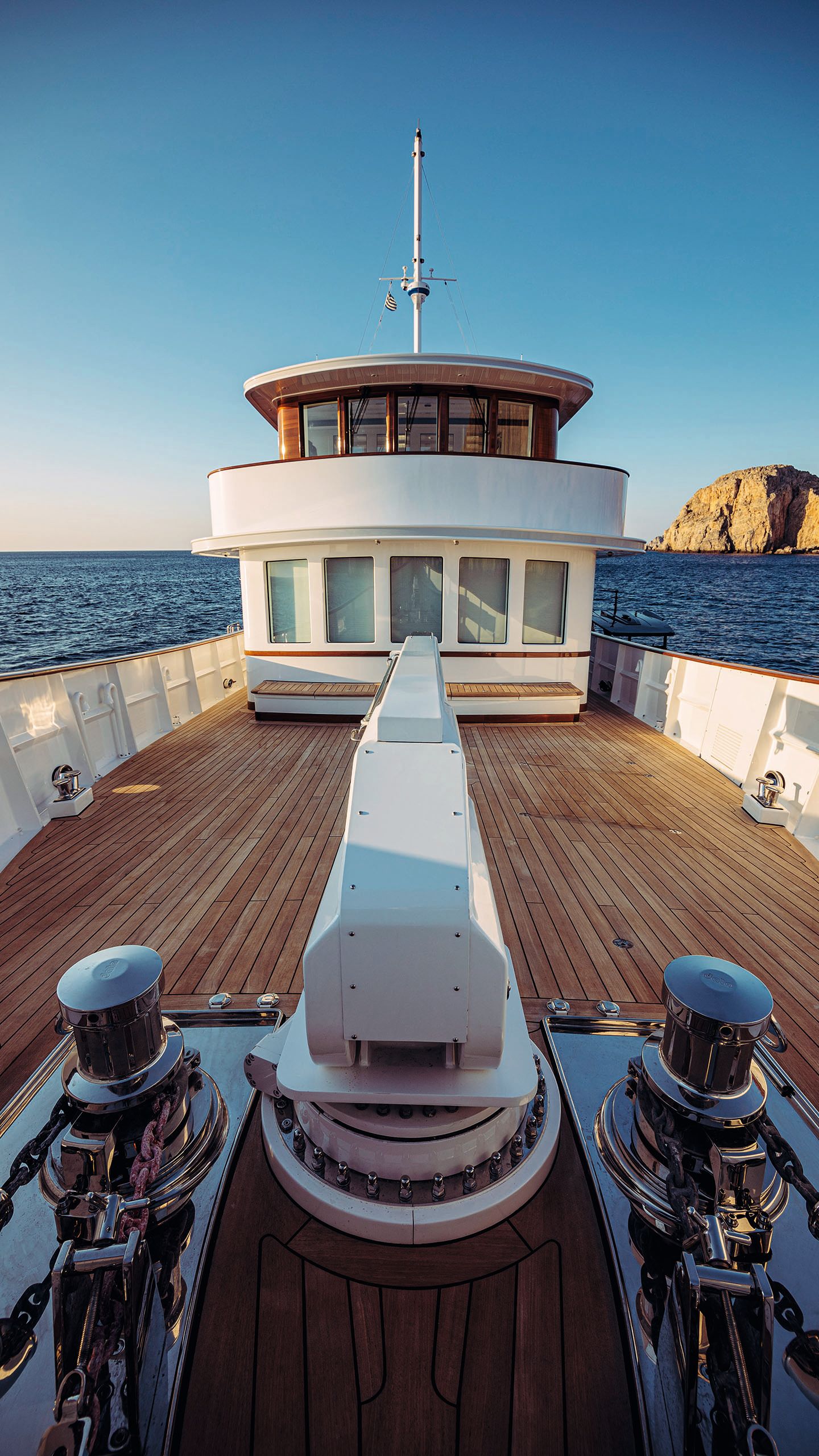
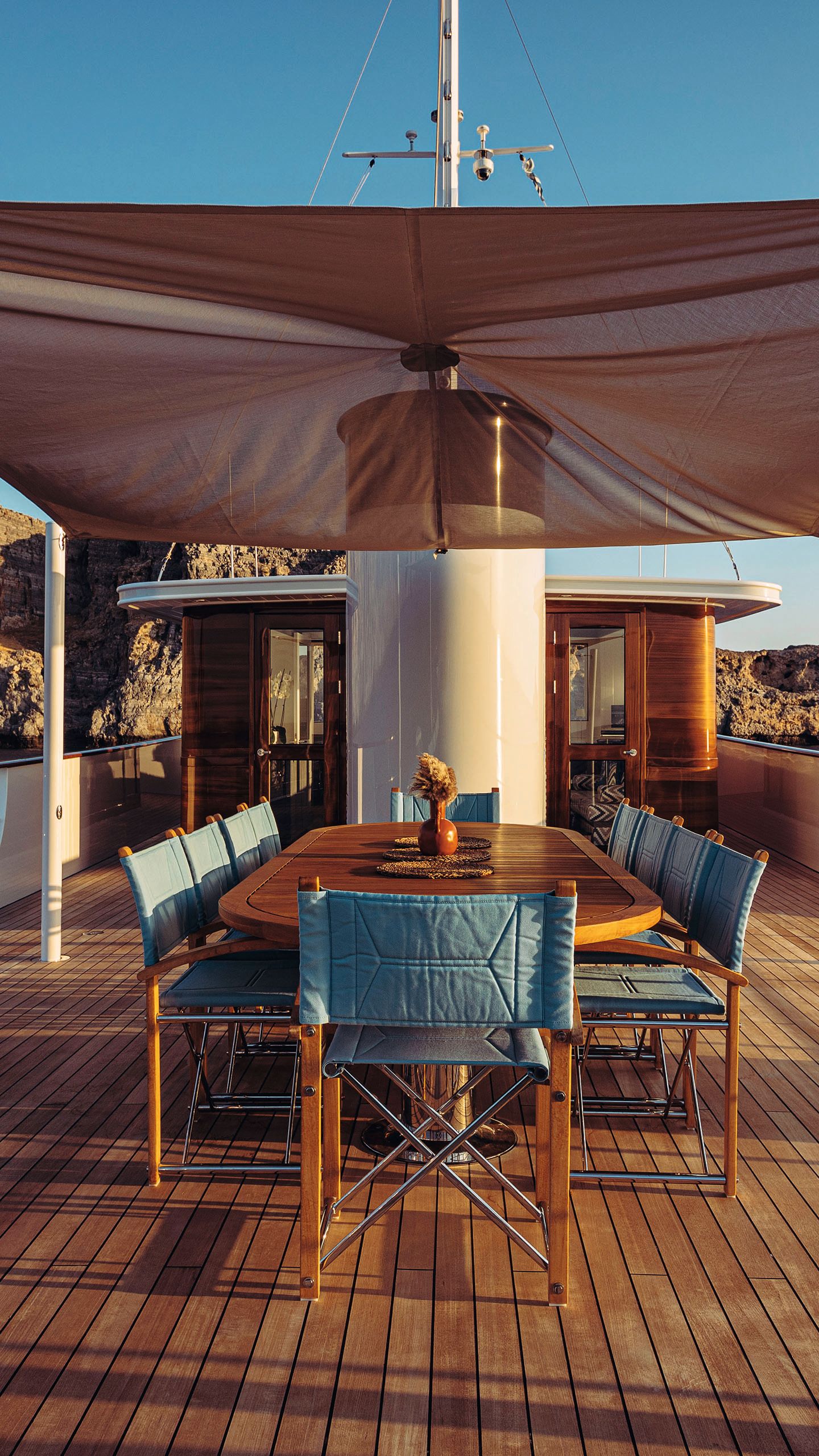
The yacht has a steel hull topped with a cold-moulded wooden composite superstructure, an unusual combination. “The advantage is that you get away from corrosion issues, and weight-wise [cold-moulded construction] is quite good, but it’s especially good insulation-wise, which makes it better than building in aluminium then cladding it with teak,” says Hoek.
STEVE TURVEY
STEVE TURVEY
“And there’s just a sense of being on a wooden epoxy boat that feels more genuine. This type of construction is labour intensive – you can’t find it in many places, but [SES Yachts] is actually capable of doing it.”
The yacht has a steel hull topped with a cold-moulded wooden composite superstructure, an unusual combination. “The advantage is that you get away from corrosion issues, and weight-wise [cold-moulded construction] is quite good, but it’s especially good insulation-wise, which makes it better than building in aluminium then cladding it with teak,” says Hoek.
“And there’s just a sense of being on a wooden epoxy boat that feels more genuine. This type of construction is labour intensive – you can’t find it in many places, but [SES Yachts] is actually capable of doing it.”
“Compared to a classic, the fuel consumption is much lower and the performance is better”
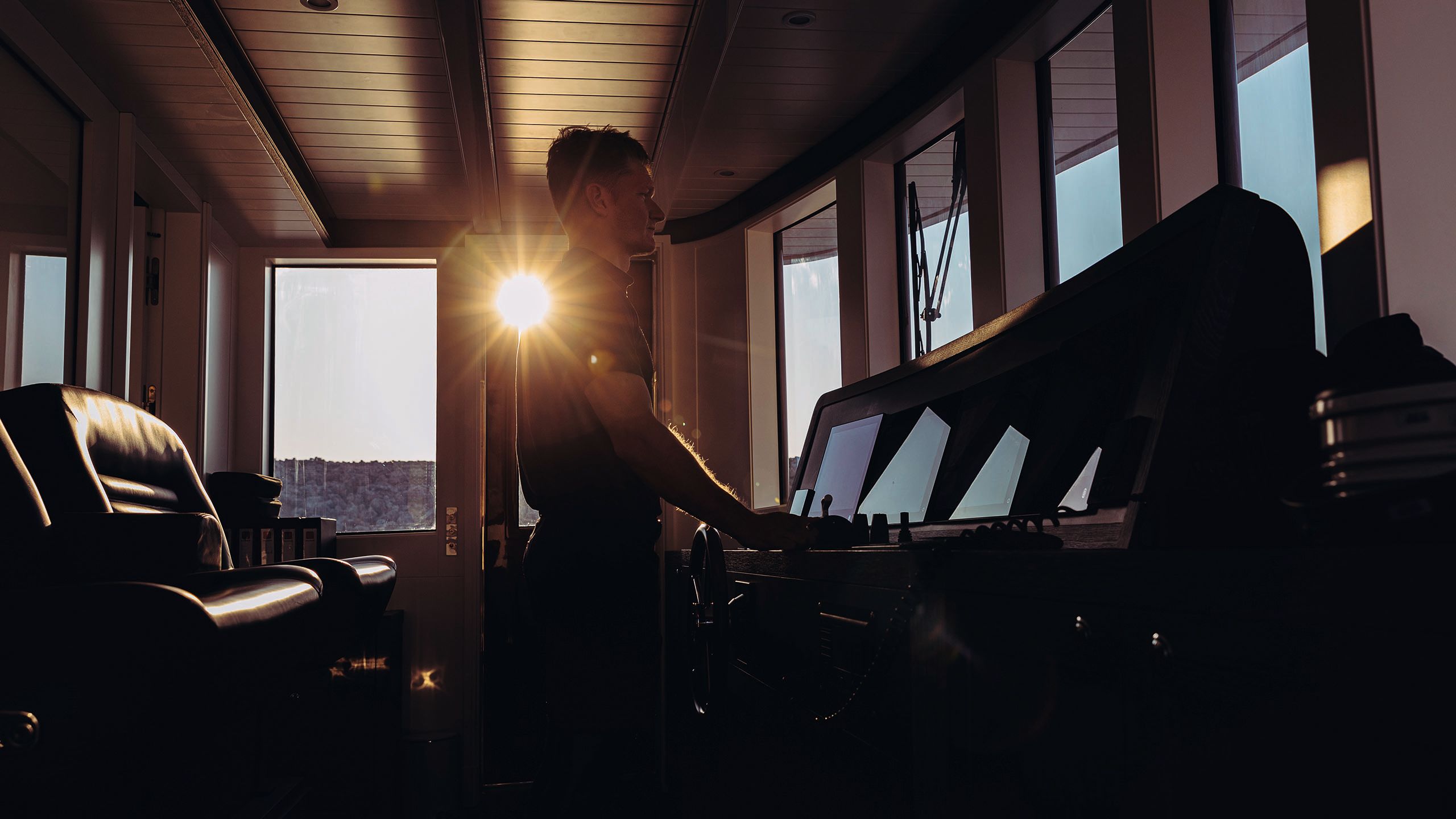
From a design perspective, another advantage of this method of construction is that the structure of the yacht can be made visible inside. The beams that you see running athwartships across the ceilings on board aren’t affectations but are actually part of the yacht’s structure.
STEVE TURVEYThe varnished deckhouse joinery gleams in the sun
STEVE TURVEYThe varnished deckhouse joinery gleams in the sun
Showcasing the beams also allowed Hoek to raise the headroom to a lofty 2.3 metres in the main saloon and 2.25 metres on the lower deck and bridge deck. It’s an asset when you consider the low ceilings of many traditional classic yachts.
While showing me around Far Niente, Hoek points out design solutions that serve both form and function, such as the freeing ports hidden in the bulwarks that help drainage when a lot of water comes on deck and the tall waterfall margins where the deck curves up to meet the deckhouse.
“Normally the seams [between deck and deckhouse] would be lower, but this is much better because the seam between deck and superstructure is in the vertical part of the deckhouse, instead of in the corner between hull and deck,” says Hoek.
“But it takes a lot of wood and labour. This is like traditional boatbuilding. Not many yards do this anymore.” The same could be said of the wide, hefty cap rails, which, gleaming with varnish, conjure up the feeling of being on board a solidly built classic yacht. Other classic cues include the slanted foredeck and the funnel protruding from the bridge deck aft.
STEVE TURVEY
STEVE TURVEY
STEVE TURVEY
STEVE TURVEY
STEVE TURVEY
STEVE TURVEY
STEVE TURVEY
STEVE TURVEY
The owners were heavily involved in selecting the interior decor, which includes deep B&B Italia sofas and a custom marble dining table. The sofa in the cosy upper deck lounge (bottom left) has a jazzy chevron print
Per the owners’ requests, the interior feels decidedly less classic. They opted for a more contemporary style, which sees quarter-sawn grey washed oak used for the cabinetry, while the planked ceilings are painted off white. The floor is also in oak, but in a lighter grey wash than the joinery.
The mix of grey and white gives the interiors a welcome sense of simplicity and calm and puts the modern in modern classic. The owners chose the colour palette as well as all of the materials and furnishings, such as the fabric on the headboard in the master suite that depicts cranes flying skywards.
The mix of grey and white gives the interiors a welcome sense of simplicity and calm, and puts the modern in modern classic
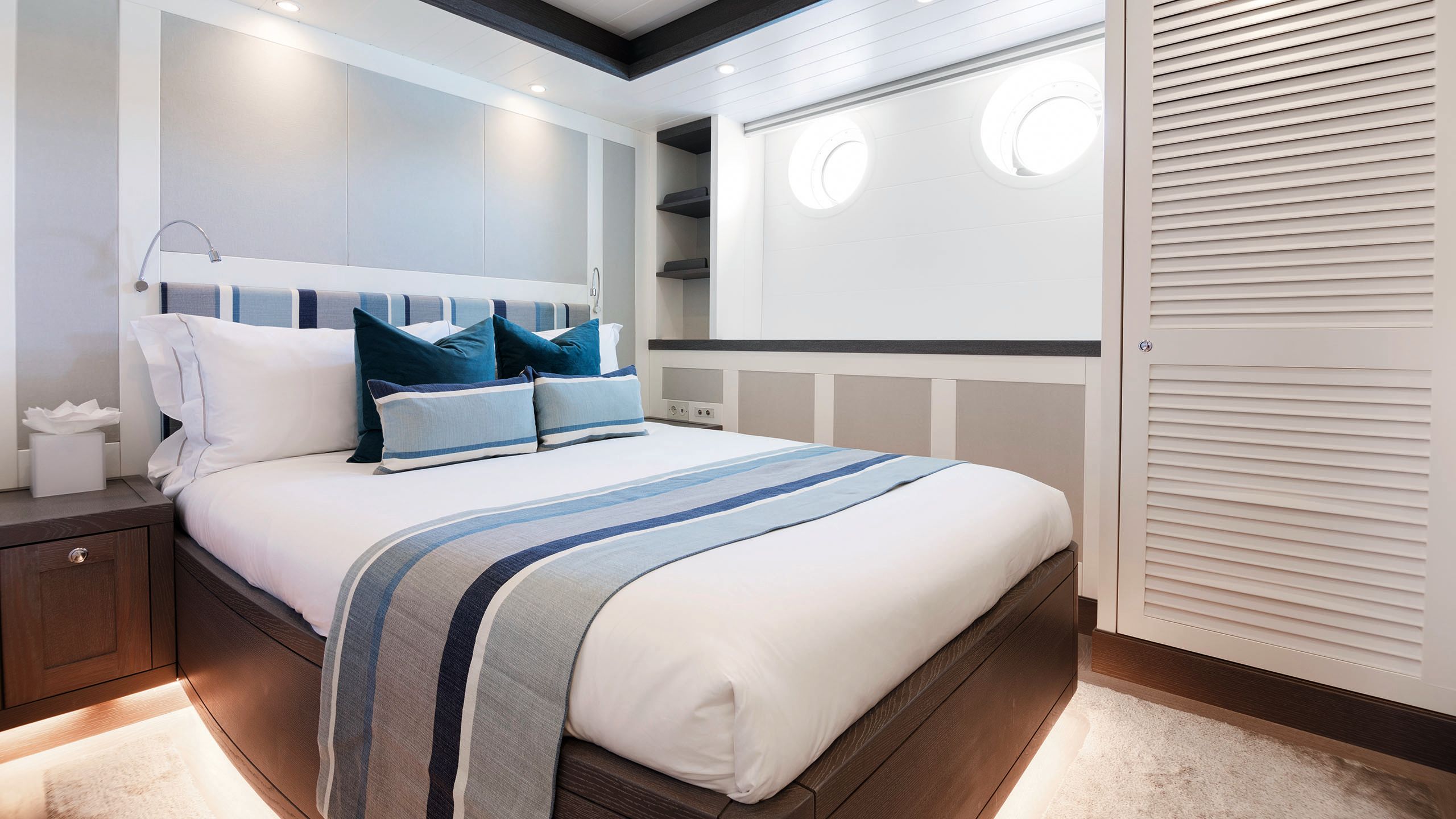
The yacht’s layout is a departure from your typical classic as well, with a main-deck master forward – a window-filled room that looks out over the foredeck. Cambered like a workboat, the angled foredeck is capable of carrying two seven-metre tenders, launched by a one-tonne crane.
While Far Niente is not a replica, she was certainly inspired by the lines of Dutch herring luggers of the early 1900s
Far Niente’s main saloon is bookended by two seating areas, a small lounge in the foyer with a pair of sofas facing each other, and two larger L-shaped sofas by B&B Italia set at the forward bulkhead, which Hoek says the owners will mainly use to watch movies. At the centre of the open-plan saloon is a long, custom dining table seating 10, topped in a grey marble. A petite and cosy upper-deck saloon rounds out the interior communal living spaces.
STEVE TURVEY
STEVE TURVEY
STEVE TURVEY
STEVE TURVEY
STEVE TURVEY
STEVE TURVEY
STEVE TURVEY
STEVE TURVEY
Finished in oak with a range of white and grey stains, the interiors have a light and bright feel. The main deck master (top left and bottom right) has wraparound windows overlooking the bow
Further differentiating the yacht from a typical classic are the four good-sized guest cabins below decks. “She charters well due to her five-cabin layout,” says Hoek. Her charter credentials also include a surprisingly ample toy box brimming with everything from an e-foil and wakeboards to a jellyfish-proof netted pool for sea swims.
STEVE TURVEYSES Yachts is skilled in cold-moulded wooden epoxy construction (as well as steel and aluminium)
STEVE TURVEYSES Yachts is skilled in cold-moulded wooden epoxy construction (as well as steel and aluminium)
Far Niente is likely to appeal to guests who enjoy the romance of dining on the bridge deck beneath a funnel, yet also appreciate a hull optimised by modern means for comfortable seakeeping. Hoek utilised computational fluid dynamics to “highly optimise” the shapes of the displacement hull and its single propeller. “Compared to a classic, the fuel consumption is much lower and the performance is better,” says Hoek.
Further differentiating the yacht from a typical classic are the four good-sized guest cabins below decks. “She charters well due to her five-cabin layout,” says Hoek. Her charter credentials also include a surprisingly ample toy box brimming with everything from an e-foil and wakeboards to a jellyfish-proof netted pool for sea swims.
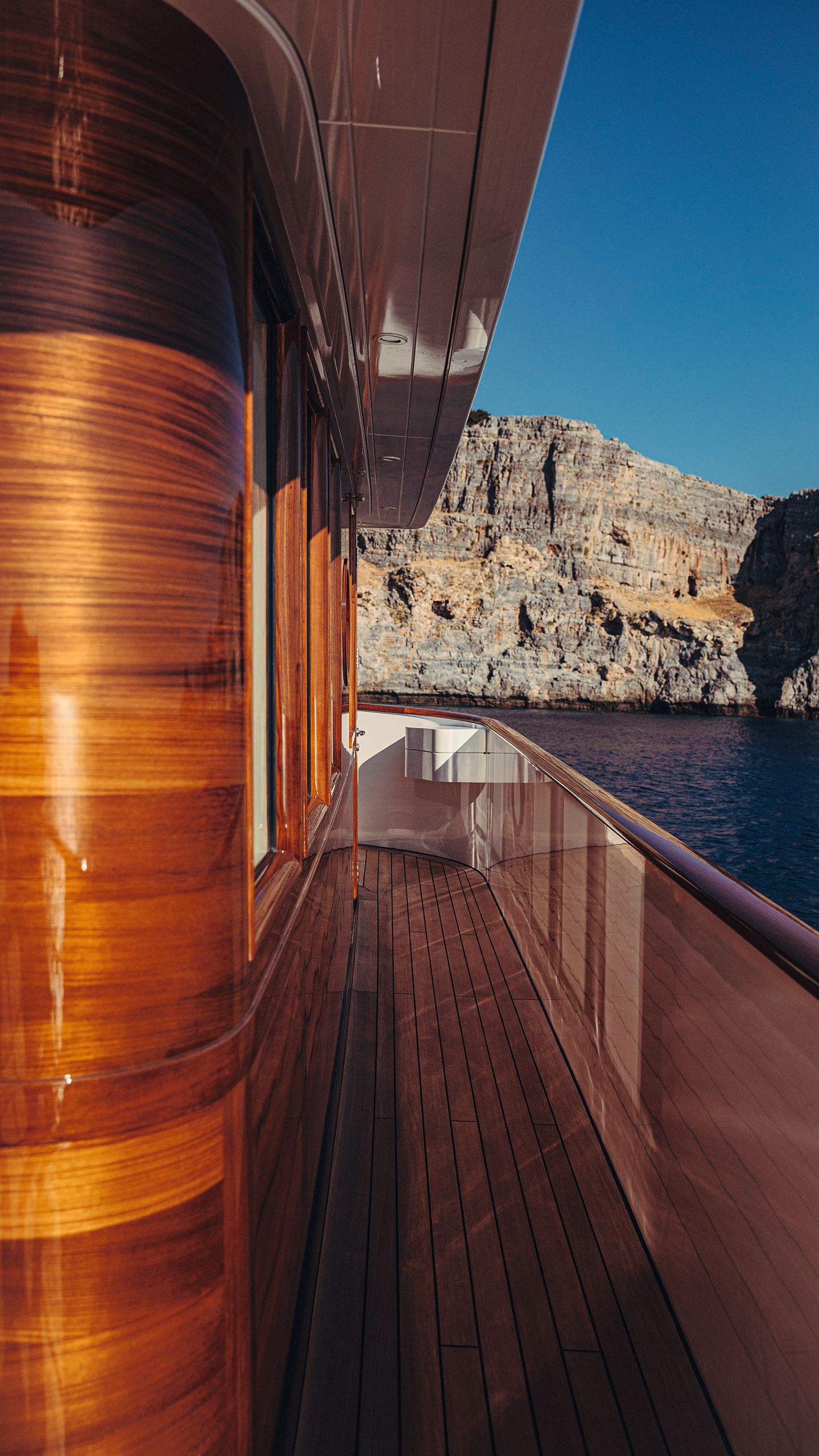
Far Niente is likely to appeal to guests who enjoy the romance of dining on the bridge deck beneath a funnel, yet also appreciate a hull optimised by modern means for comfortable seakeeping. Hoek utilised computational fluid dynamics to “highly optimise” the shapes of the displacement hull and its single propeller. “Compared to a classic, the fuel consumption is much lower and the performance is better,” says Hoek.
STEVE TURVEYThe upper-deck seating transforms as well, morphing from dining to sunpads
STEVE TURVEYThe upper-deck seating transforms as well, morphing from dining to sunpads
Far Niente’s range is 3,750 nautical miles while cruising at 11 knots. Sleipner stabilisers bolster the yacht’s comfort, and bow and stern thrusters aid in manoeuvrability.
“It was very interesting to design a classically styled yacht that technically and material-wise is a very modern yacht,” says Hoek. “She turns heads wherever she goes, and for a yacht this size, she ticks all the boxes.” From stern to smokestack, Far Niente might resemble a classic, but it’s her well-considered modern touches that will make life on board a treat for her owners and charter guests alike.
First published in the May 2025 issue of BOAT International. Get this magazine sent straight to your door, or subscribe and never miss an issue.
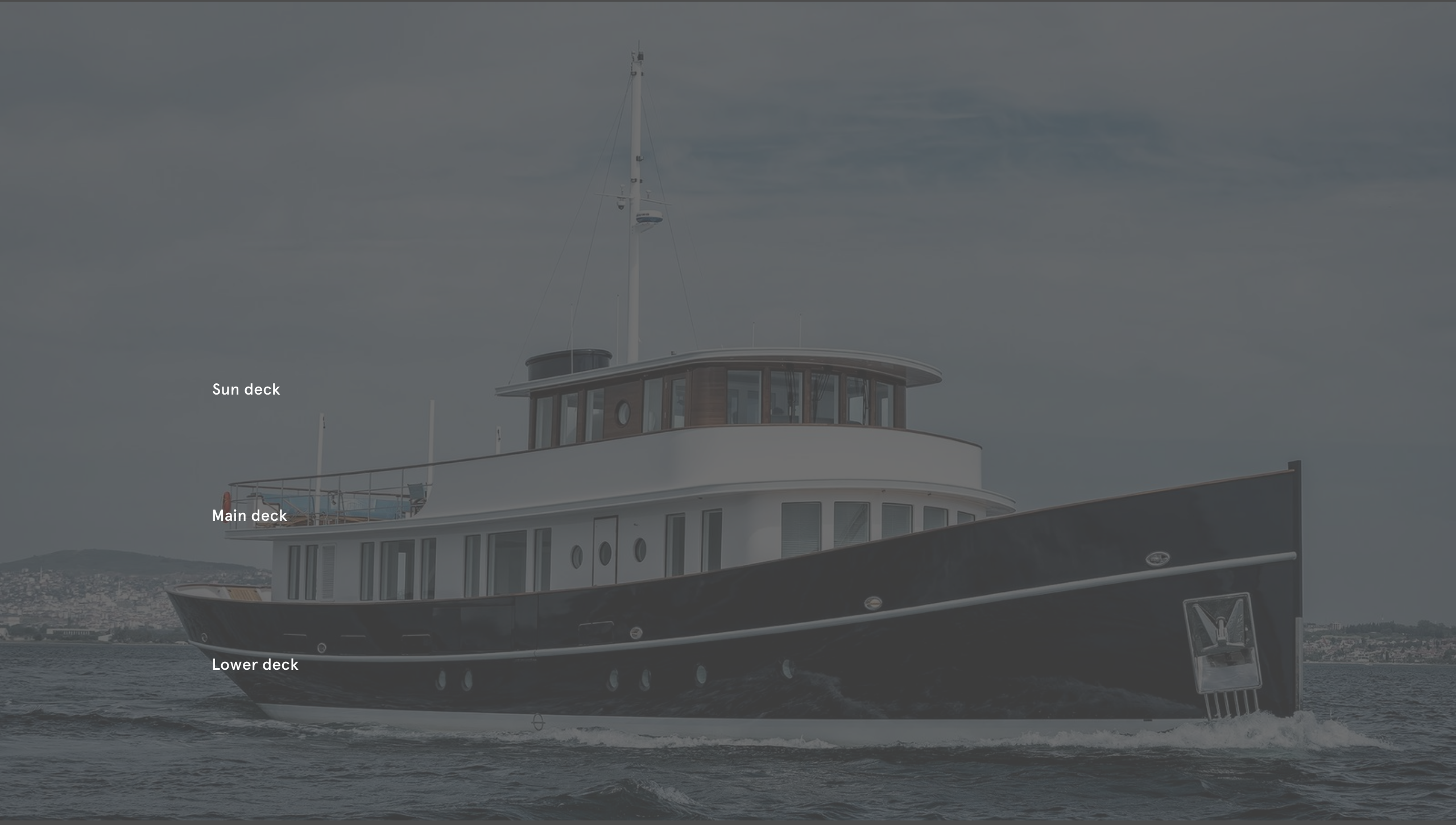
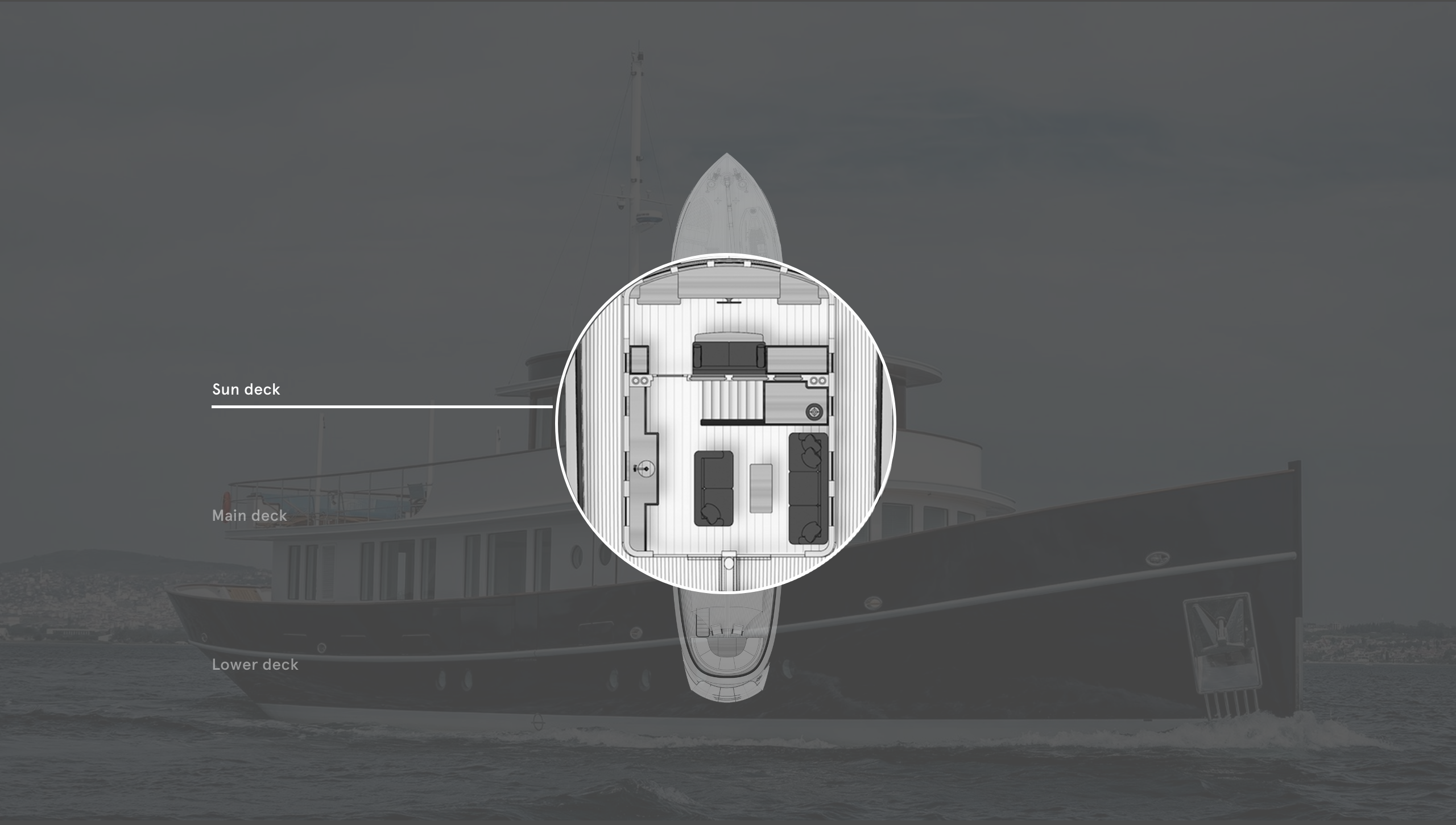
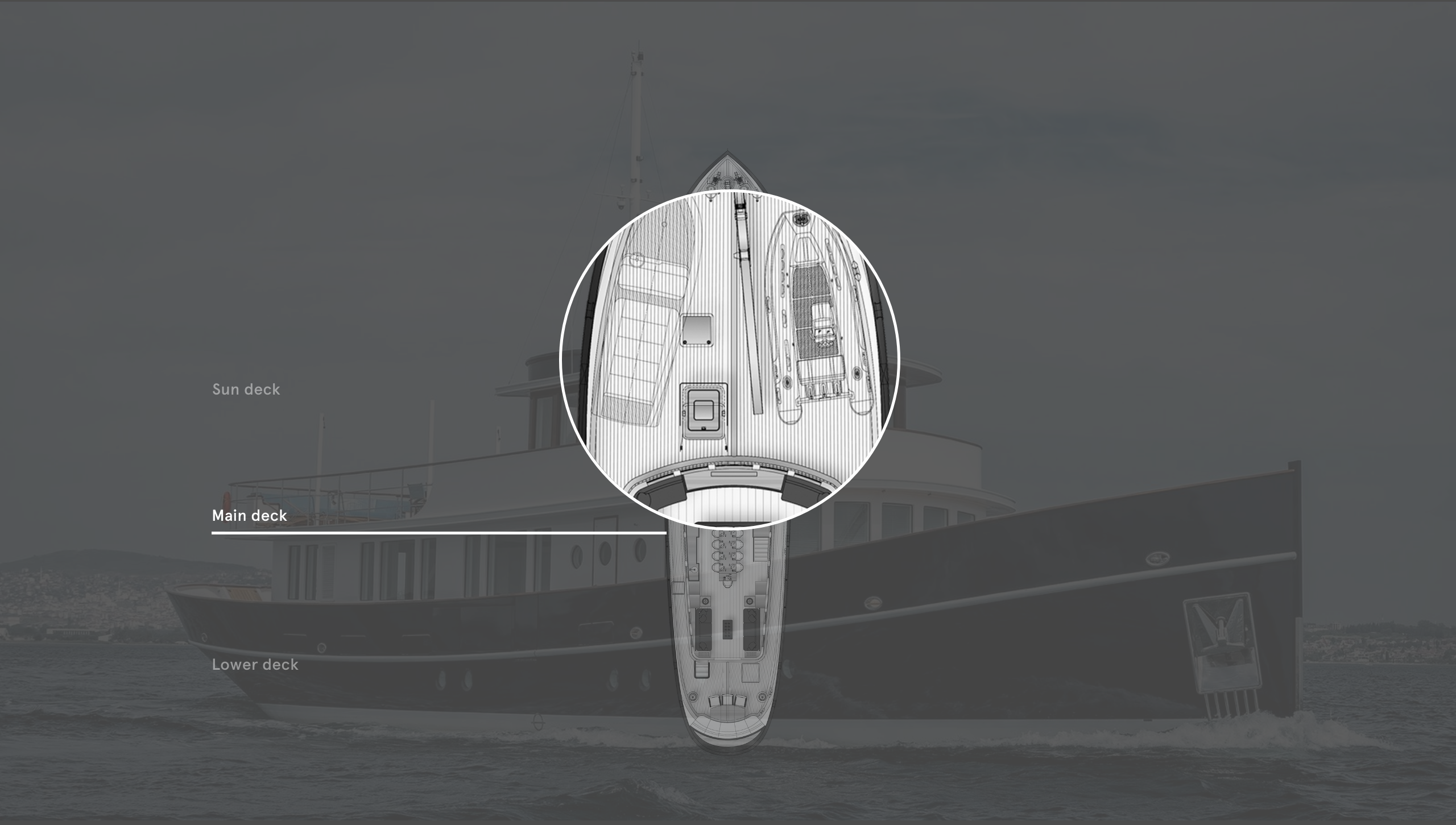
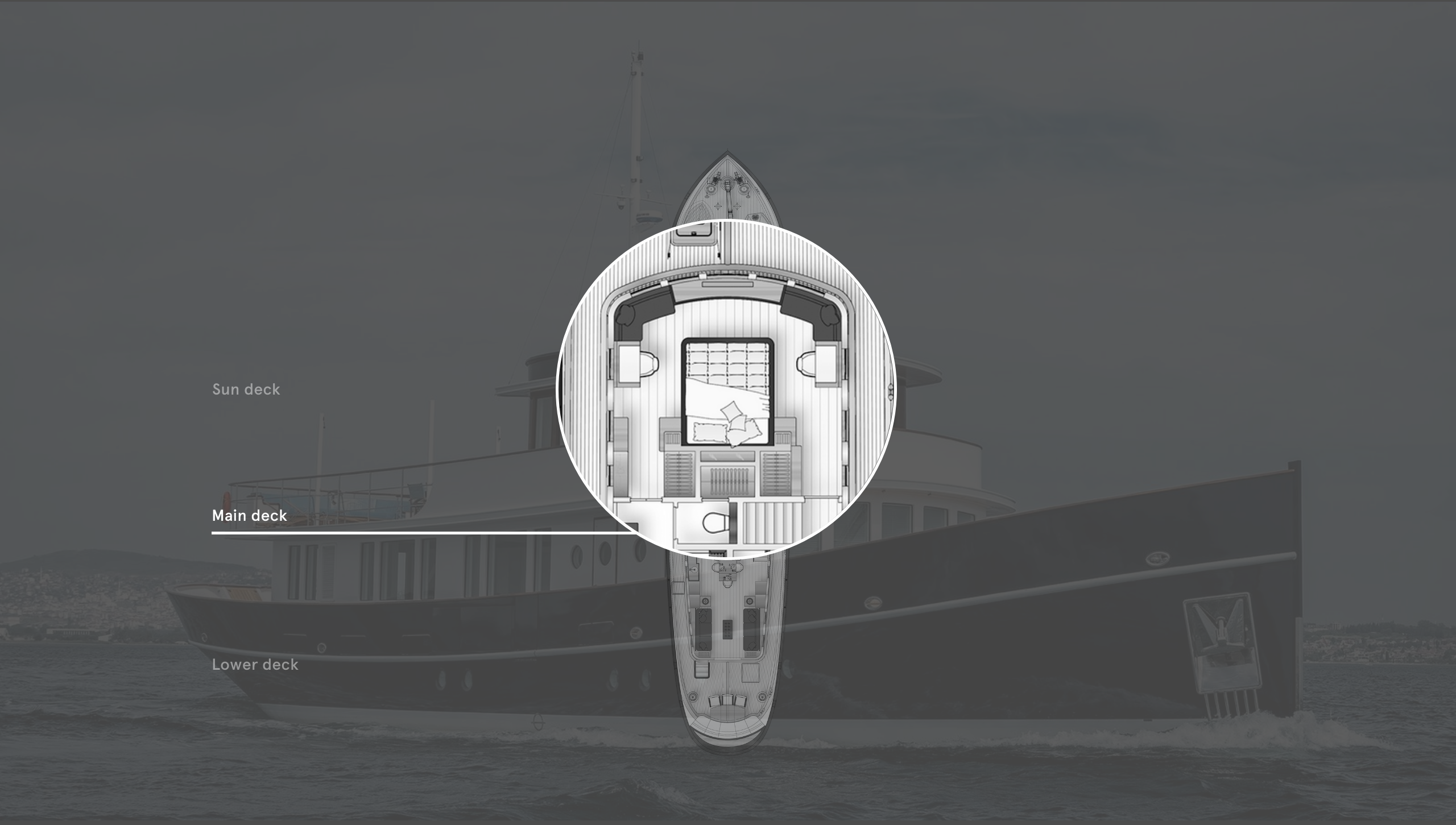


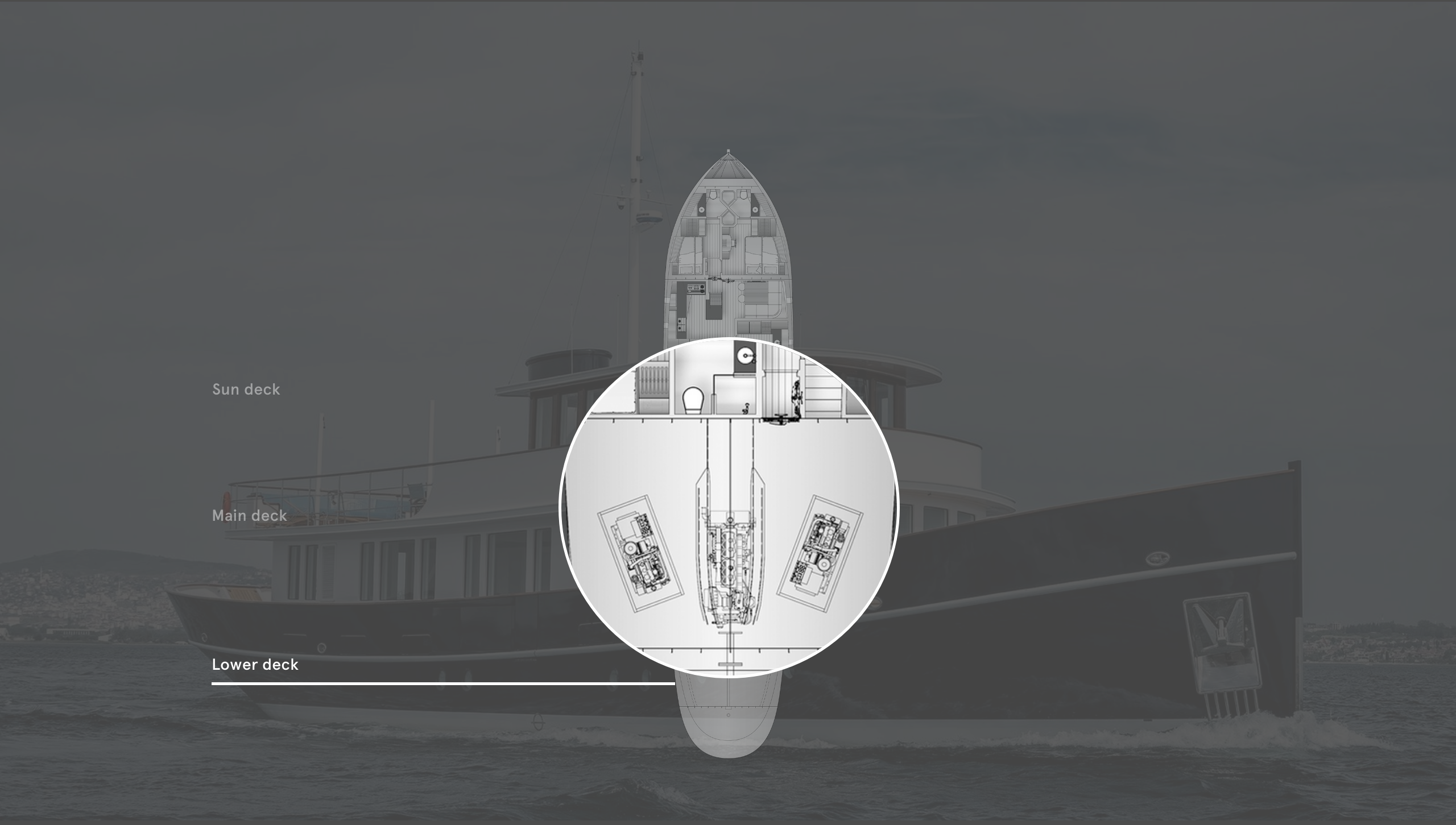

A petite upper deck saloon sits behind the bridge
Two tenders up to 7m long can fit on the foredeck
The owner’s cabin is more modern than classic, surrounded by windows
The forward seating area is for watching films
Guest cabins are quite equitably sized
One engine, plus two gensets fill the engine room
LOA 32.7m | Gross tonnage |
LWL 29.9m | Engine |
Beam 6.75m | Generators |
Stabilisers | Draught 1.9m |
Range at 9 knots | Speed (max/cruise) |
Fuel capacity | Tender 10m Novamarine |
Freshwater capacity | Owners/guests 10 |
Classification | Crew 5 |
Naval architecture | Construction |
Exterior design | Builder/year |
Interior design | For charter |


